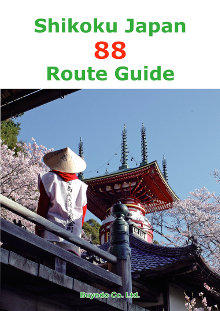* You can find all the equipment at temple number 1 Ryouzenji *

1.
CLOTHING
The japanese pilgrim has a special symbolic clothing to walk the pilgrimage.
You can take what you want, there is a great tolerance on the pilgrimage, nothing is obligatory.
The classic clothing is made of a white jacket, a rucksack, a walking stick, white trousers, a "chinese hat", a bell, a white bag and a little stole.
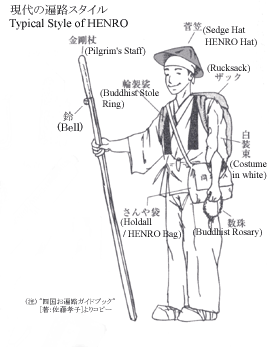
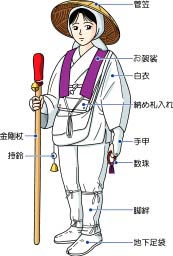
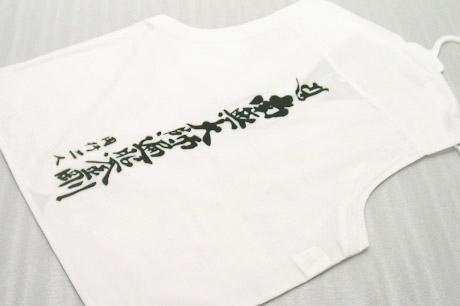
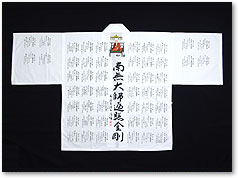
 Vu de dessous
Vu de dessous 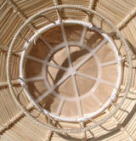
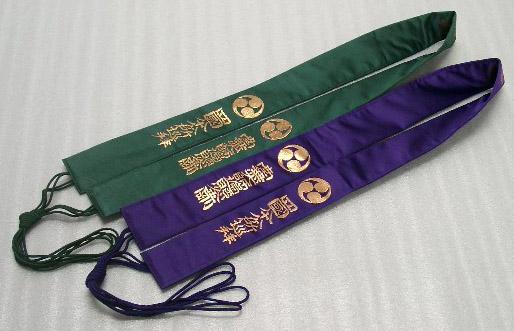
Two websites to see equipment and prices, individually or by set (セット setto).
Henro kit
2. MAPS and ACCOMODATION DIRECTORY
Shikoku henro hitori aruki dougyou ninin
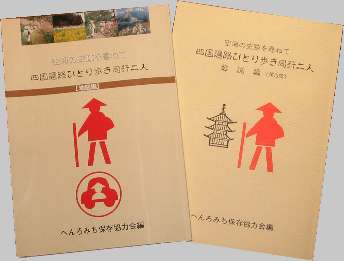
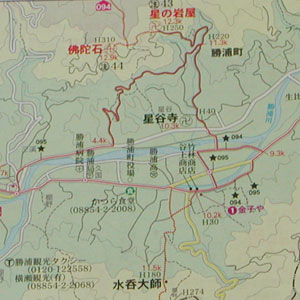
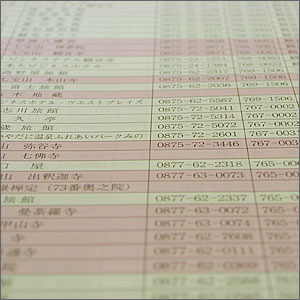
3. NOTEBOOK, RITUAL OBJECTS ...
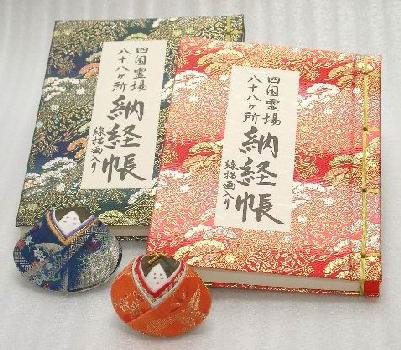

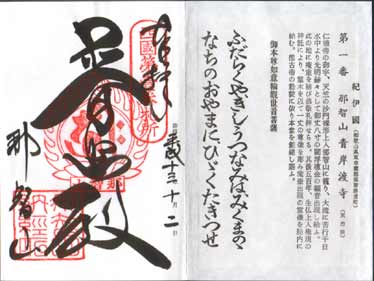
The japanese pilgrim has a special symbolic clothing to walk the pilgrimage.
You can take what you want, there is a great tolerance on the pilgrimage, nothing is obligatory.
The classic clothing is made of a white jacket, a rucksack, a walking stick, white trousers, a "chinese hat", a bell, a white bag and a little stole.


A/C buses' henros have often
the complete kit, wrapped with transparent
plastic to protect stick and hat from the dirt: they will be exposed at
home in the tokonoma. Walking pilgrims (歩
き 遍路) often have hiking or sport clothes, but always covered with the
white jacket, with or without sleeves.


The
white jacket Hakue ou Byakue 白衣 (はくえ, びゃくえ) is
marked at the back Yu (sanscrit sacred syllable for Maitreya) +
Namu Daishi Henjo Kongo 南無大師遍照金剛 (Ave Daishi shining diamond), to
honnour Kûkai. it is white like those of the dead to mean
renunciation, and dead henros were buried with it. Bijas, Kukai and sanskrit
Maitreya Yu bija
It's the only "obligatory" piece of cloth. Essential to be known as a henro on the road. The henro is respected on the road, much more than the simple passing stranger. It changes completely the relations with the people.
The henro is considered to be somebody who has left his obligations and family to make an effort for himself or for the others (after a death for exemple), he is respected and eventually helped by offerings (o-settai). The o-settai is a way to participate in the pilgrimage, and it cannot be refused. If it is too much (money) or too heavy (pounds of mandarins), you'll share it with other henros.
The rucksack is normal, all rucksack adapted to long walking stages (Compostela type) is adapted.
White trousers are difficult to keep clean on muddy paths, so many walkers are wearing jeans or dark trousers. Some wear leggings to protect the shoes of the water durind heavy subtropical rain.
The "chinese hat" Sugegasa 菅笠 (すげがさ) is common, it drains sweat off, air passes through (theorically because not to be hurt you have to protect your head from the osier frame, rolling an Onsen towel around your head or on the frame). Covered whith plastic, it's a good rain protection. But it is cumbersome and personnally I feel in fancy dress with it. Bob sunhat is classic, white or other colour. Cap with a flap on the neck is practical also.
Maitreya Yu bija
It's the only "obligatory" piece of cloth. Essential to be known as a henro on the road. The henro is respected on the road, much more than the simple passing stranger. It changes completely the relations with the people.
The henro is considered to be somebody who has left his obligations and family to make an effort for himself or for the others (after a death for exemple), he is respected and eventually helped by offerings (o-settai). The o-settai is a way to participate in the pilgrimage, and it cannot be refused. If it is too much (money) or too heavy (pounds of mandarins), you'll share it with other henros.
The rucksack is normal, all rucksack adapted to long walking stages (Compostela type) is adapted.
White trousers are difficult to keep clean on muddy paths, so many walkers are wearing jeans or dark trousers. Some wear leggings to protect the shoes of the water durind heavy subtropical rain.
The "chinese hat" Sugegasa 菅笠 (すげがさ) is common, it drains sweat off, air passes through (theorically because not to be hurt you have to protect your head from the osier frame, rolling an Onsen towel around your head or on the frame). Covered whith plastic, it's a good rain protection. But it is cumbersome and personnally I feel in fancy dress with it. Bob sunhat is classic, white or other colour. Cap with a flap on the neck is practical also.
 Vu de dessous
Vu de dessous 
The pilgrim's staff Kongozue 金
剛杖(こ
んごうづ
え)is
made of wood, with a colored and golden cover at the top, often with a
bell to be heard from the other pilgrims on the way, and to frighten the
"wild animals and the bad spirits" away. It is marked Dougyou
Ninin 同行二人 (both walking together), the stick representing
Kûkai
walking with the henro, exactly like Compostela's "bourdon" stick
represents St James walking with the pilgrim.
The stole Wagesa 輪袈裟 (わげさ), on the neck. It's written 四国八十八ヶ所巡拝 Shikoku Hachijuuhachi kasho junpai "= Shikoku 88 temples pilgrimage" et Namu Daishi Henjo Kongo 南無大師遍照金剛, like on the jacket.
The stole Wagesa 輪袈裟 (わげさ), on the neck. It's written 四国八十八ヶ所巡拝 Shikoku Hachijuuhachi kasho junpai "= Shikoku 88 temples pilgrimage" et Namu Daishi Henjo Kongo 南無大師遍照金剛, like on the jacket.

Two websites to see equipment and prices, individually or by set (セット setto).
Henro kit
2. MAPS and ACCOMODATION DIRECTORY
One book is absolutely necessary
to the henro:
"Shikoku henro
hitori aruki dougyou ninin" 四国 遍路 ひとり 歩き 同行 二人 (Shikoku
pilgrimage alone walking together going) by Mr MIYASAKI Tateki 宮崎建樹. The first
volume contains maps and accomodation directory, the second gives advice to
pilgrims (only japanese, it will be useful only for those
understanding japanese, others can lighten the rucksack). A new edition
was printed, it seems you can now buy the map book separately for 2500
yens and the text book for 1000 yens. Verify the map book you buy
contains the hotel hotel address directory (see below, right photo).
The new edition contains more accomodation, but less contour lines. Watch for the differences of altitude (for exemple between temples 19 and 21).
You can find the book at temples 1, 11,21, 24, 29, 54, 75.
Japanes Internet websites where you can order seem difficult if you don't speak japanese:
The new edition contains more accomodation, but less contour lines. Watch for the differences of altitude (for exemple between temples 19 and 21).
You can find the book at temples 1, 11,21, 24, 29, 54, 75.
Japanes Internet websites where you can order seem difficult if you don't speak japanese:
Shikoku henro hitori aruki dougyou ninin



The
notebook where you will collect stamps and calligraphy at each temple
is called Noukyouchou 納経帳 (のうきょうちょう), book for noukyou
(sutra's copy). You can find it large, small, white or with a drawing
or phot of each temple on the other side, practical not to make
mistakes in the order of the temples if you don't read fluently
japanese numbers.


Arriving
at the temple, you go to the office Noukyoujo 納経所 to obtain the Houin
宝印 (temple's seal), commonly known as Noukyou, and let write a
calligraphy on the page, for 300 yens at each temple, which represents
a little sum if you're walking the whole the pilgrimage: 300 x 88
=
26400 yens
soit 180 Euros or 200 US$. Some strangers go without, and you can see
japanese people take a photo at each temple and go away immediately.

Some let put stamps on a
roll 掛軸 (かけじく), or on their white jacket.
Meaning of the Calligraphy in the Nokyocho
Kushima osamefuda

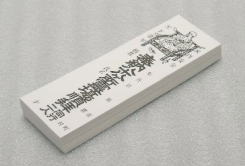
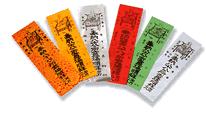
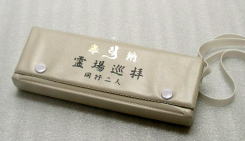
Meaning of the Calligraphy in the Nokyocho
"Visiting cards"
o-Samefuda 納
札(おさめふだ)are small paper strips wher you can write your name. You can
put one at every temple in the boxes in front of each Hondo and each
Daishido. They are sold by 200. As everything on the henro trail, it is
not obligatory.
You can also give one samefuda to people giving you an o-settai, to thank them.
Mr Kushima recommends not to be too precise with name and address, not to be followed or annoyed by false henro friends when you're back home (spam even on pilgrimage!).
A surname in katakana and eventually the name of your country is enough (Amerika アメリカ Great Britain (igirisu) イギリス Kanada カナダ Australia オ-ストラリィア).
You can also give one samefuda to people giving you an o-settai, to thank them.
Mr Kushima recommends not to be too precise with name and address, not to be followed or annoyed by false henro friends when you're back home (spam even on pilgrimage!).
A surname in katakana and eventually the name of your country is enough (Amerika アメリカ Great Britain (igirisu) イギリス Kanada カナダ Australia オ-ストラリィア).
Kushima osamefuda
Samefuda
are white for henros who walk around the island for the 4 first
times,
green from 5 to 7 times,
red from 8 to 24 times,
silver from 25 to
49 times, golden from 50 to 99 times, and embroidered (called
nishiki) from 100 times, that means 100 times 1200 km (750 miles) =
120000 km (75000 miles)!
Some
inhabitants are collecting high colour cards as a luchy charm.
Some henros carry samefuda in a special box marked "Travelling with daishi on the 88 temples of Shikoku".
Some henros carry samefuda in a special box marked "Travelling with daishi on the 88 temples of Shikoku".




Samefuda meaning
天下泰平 (Tenka taihei) Peace on Earth
家内安全 (Kanai anzen) Safety in the household
年 year 月 month 日 day
姓名 name and "christian" name
住所 address
奉納 (hounou) dedicate
八十八ヶ所靈場 (hachijuu hakka sho reijou) 88 sacred places
順拜 ou 巡礼 (junrei) pilgrimage
同行二人 (dougyou ninin) two walking together
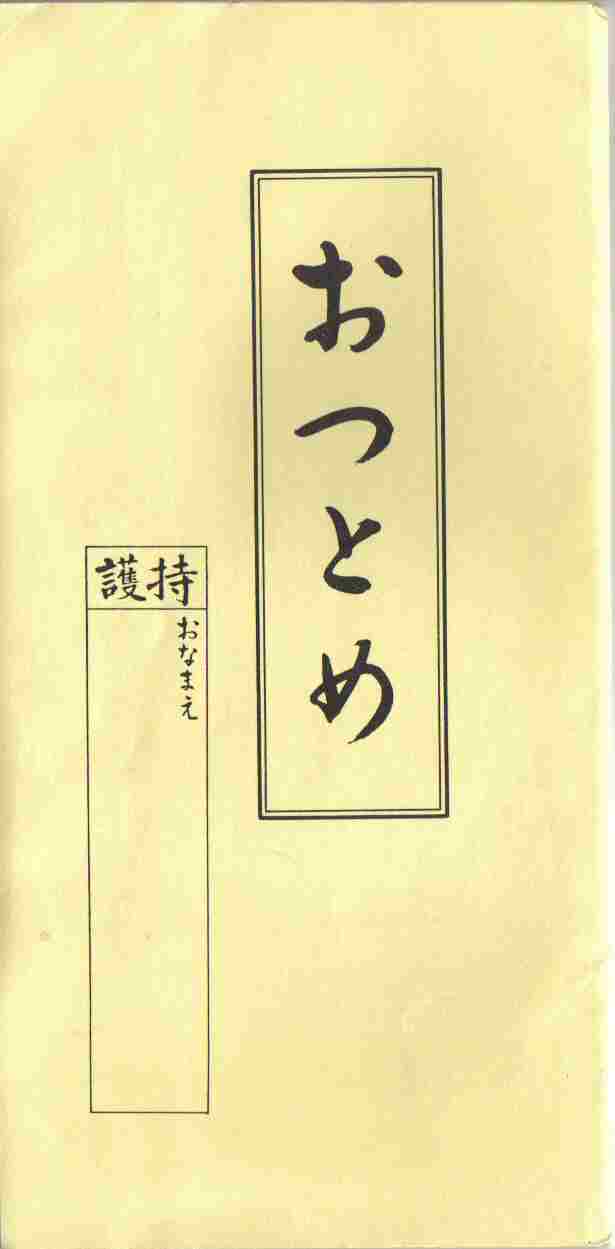
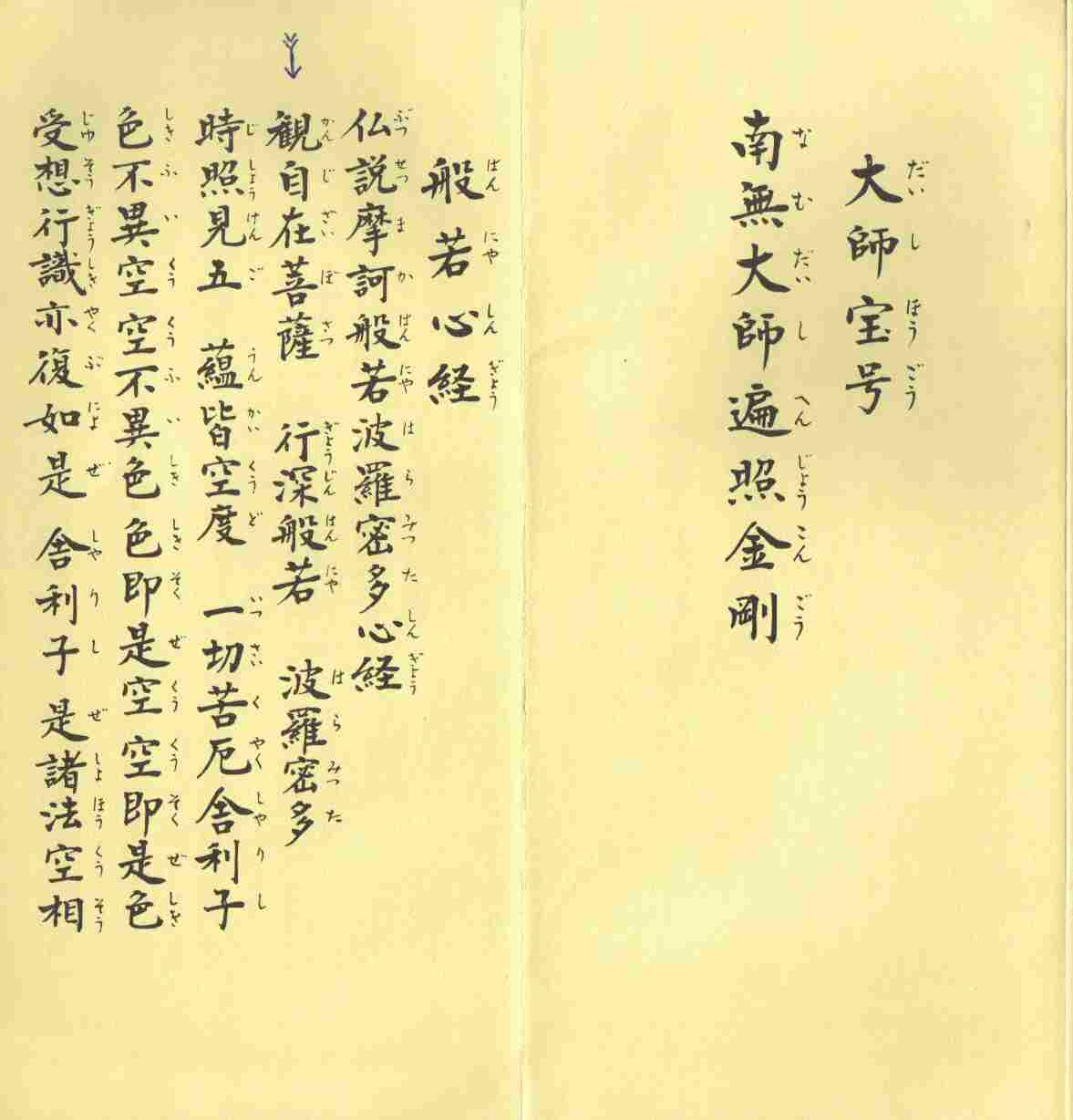

*********************************

天下泰平 (Tenka taihei) Peace on Earth
家内安全 (Kanai anzen) Safety in the household
年 year 月 month 日 day
姓名 name and "christian" name
住所 address
奉納 (hounou) dedicate
八十八ヶ所靈場 (hachijuu hakka sho reijou) 88 sacred places
順拜 ou 巡礼 (junrei) pilgrimage
同行二人 (dougyou ninin) two walking together
In the bag zudabukuro
頭陀袋(ずだぶくろ)henros carry the pilgrim's noukyouchou, samefuda,
incense, etc... Walking henros with rucksack often have none.
The buddhist rosary Juzu 数珠 (じゅず) is intended to buddhist prayer.
Finally, you can have religious books 経本(きょうほん) with the prayers to say at the temple o-tsutome お勤め (おつとめ) or general text to study on the way. the classic book is est "The teaching of Buddha" from Bukkyo dendo Kyokai (BDK) in japanese and english. BDK is the buddhist equivalent of christian Gideons, and put this book in hotels, waiting romm, schools... BDK
The buddhist rosary Juzu 数珠 (じゅず) is intended to buddhist prayer.
Finally, you can have religious books 経本(きょうほん) with the prayers to say at the temple o-tsutome お勤め (おつとめ) or general text to study on the way. the classic book is est "The teaching of Buddha" from Bukkyo dendo Kyokai (BDK) in japanese and english. BDK is the buddhist equivalent of christian Gideons, and put this book in hotels, waiting romm, schools... BDK



*********************************

